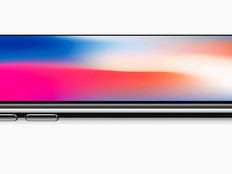Tablets Go to Work: The Latest Wave of Tablets Boost Productivity
The latest Windows 8 and RT devices add to an already diverse and innovative field of portable computers running iOS, Android and Windows 7 operating systems. The rise of tablets, with the acceptance of Apple iPads over the last two and a half years, spearheaded the trend of ubiquitous mobility.
Although not designed specifically for operational apps, iPads and later Android tablets bring new capabilities to organizations, thanks to light weight, long battery life and ease of accessing and updating information.
Hotels are shortening lines at registration desks by equipping agents with tablets for checking in guests while in lobbies or even at airports. Home-visiting healthcare workers enter patient data into custom tablet apps instead of waiting to do so back at the office. Insurance adjusters can complete digital claim forms on the spot. And government workers are using the devices to cut down on paper. With such use, organizations make their workers more efficient and streamline workflows.
HP’s new ElitePad 900 illustrates the state of tablet design today.
“When we designed the ElitePad, we did so with the active participation of large organizations and their IT departments,” says Jeffery Hoag, lead for the mobile R&D team in the Microsoft Program Office at HP. “They were primarily interested in consuming information. But they also wanted to switch to use Office or any of the custom applications that are unique to their operations. And they wanted support for their IT infrastructures’ security and group policies.”
The resulting device offers a 10.1-inch screen and takes advantage of all the new Windows 8 features, including secure boot capabilities, optimized battery life and the ability to power up almost instantly. The tablet also performs background updates of email messages and data for other applications.
“It creates the experience of always having the latest information right at your fingertips,” Hoag adds.
The ElitePad 900 runs on the Intel Atom Z2760 processor, a new chip that, according to Intel, targets Windows 8 tablets and offers higher performance, lower heat and lower power consumption than earlier Atom versions. The dual-core processors are also optimized for multitasking and provide hardware-based encryption for security. In addition to new applications developed for Windows 8, the Z2760 supports existing x86 programs.
Because mobility needs are so diverse, the ElitePad comes with optional docking stations that HP calls Smart Jackets. Two initial choices will be available when the tablet ships. One, the Expansion Jacket, provides additional USB ports, an SD memory-card slot and an additional battery. The other, the Productivity Jacket, features a physical keyboard and additional ports.
“As we move forward, we will start offering Smart Jackets that target some vertical applications,” Hoag says.







